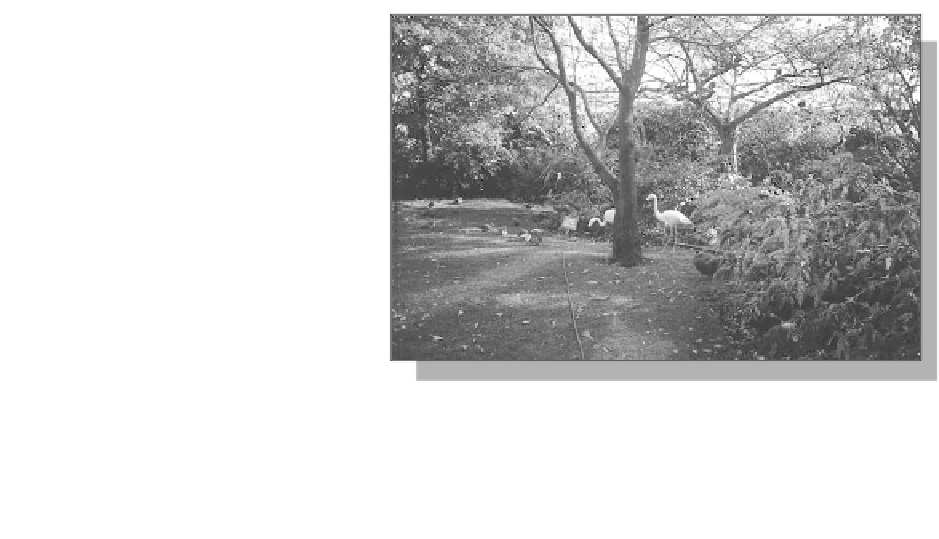Civil Engineering Reference
In-Depth Information
Europe, e.g. Berlin, experiencing a
renaissance in the use of grass on
roofs.
The insulating properties of turf
roofs are difficult to assess - much
needs to be taken into considera-
tion: not only the earth structure
but also the wind-proofing effect of
grass, the collection of dew, the
activity of the roots which develop
warmth, its high capacity to store
heat and its varying moisture con-
tent.
Turf roofs are usually associated
with folk architecture with just grass
growing on the roofs. But other
plants can be chosen, and the roof
does not necessarily have to be slop-
ing, it can be flat. The following
plants are possible:
Figure 15.10: The roof garden of a large department store in
Kensington, London. This type of roof garden has a very positive
influence on the city climate.
Plants
Minimum depth of earth
Type of roof
Grass
10 cm
Flat/sloping
Larger plants
10 cm
Flat/sloping
Bushes
25 cm
Flat/sloping
Small trees
45-80 cm
Flat/sloping
Vegetables
45-60 cm
Flat
Turf roofs have always been produced locally by people building for themselves.
The methods are simple, and the grass and earth resources are infinite and can
be used direct from their source.
Bituminous and plastic-based waterproofing layers reduce the otherwise
favourable environmental qualities of this type of roof, both in terms of the
extraction of the resource and the pollution related to them.
Earth in itself has unlimited durability - it is the waterproofing layer that
decides the life span of a turf roof. Leakage problems and damage usually arise
around flashings, where pipes, chimneys etc. penetrate the roof. Earth scraped
off a damaged roof goes back to the soil and can later be used for a new turf roof.
The waterproofing layer of polyethylene can, in theory, be cleaned and recycled,



